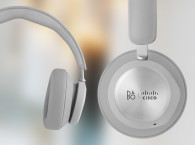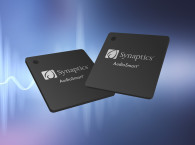Then the pandemic hit, we all started working from home and Zoom became the new global superstar, supporting pretty much all forms of communication and collaboration. Product builders have connected the dots, actively building hardware platforms compatible with popular conference service providers yet adding premium conference experiences. At a cost accessible to all of us, SMB users and even home users.

Because no matter how convenient a desktop dial-in may be, there are times when it’s more effective to meet in person, conferencing to groups in other locations as needed. But the genie is out of the bottle. Why should we have to do that from the one big room dedicated to video conferences? Now we want a solution that will scale to more meeting rooms, with portability and lower cost. With the same or better telepresence expectations we have for the high-end big room solutions. See all the attendees around the table and see and hear clearly whoever is speaking at any time.
This is no idle hope. USB video conferencing is moving fast to redefine the domain. These are lightweight systems that connect via a USB link (making them portable), are cheaper and easier to use than traditional video codecs, and connect naturally to IT and cloud systems. In Q1 of 2021 these systems accounted for 36% of video conferencing market revenue, up from 21% the previous year. Over the last 12 months, the market ran around $2 billion. The overall video conferencing market has an estimated CAGR of around 11%, a number depressed by a sharp decline in sales of traditional systems.
Indications are that the market for USB-based systems may grow much faster. Cisco, Logitech, Poly and Aver are in the lead today and other players are jumping in enthusiastically. This is already apparent in North America, even more so in Europe. Chinese ventures are not missing out on the trend either, judging by new product introductions.
These systems are already certified to work with Microsoft Teams, Zoom and other cloud-based conferencing platforms, no longer requiring specialized software to connect to Internet backbones. Which makes them even more flexible.
In the new normal, we’re all still working in hybrid mode. Even when we’re calling from our home offices, we’d like to fence out some of the unfortunate realties of WFH, dogs barking and kids playing in the background. Something these solutions can do so much better than the simple audio interface on your laptop.

Delivering attractive solutions
Cost of ownership and portability are a great start, but these systems also need to match or beat the traditional systems on features. That demands a premium audio and video experience. Start with the audio. This should be top-notch in noise suppression and acoustic echo cancellation (AEC). It should also provide accurate audio zoom and fence control. Excluding background chatter and other noises by zooming in on the speaker. Video needs the option to support wide-angle views, which software will need to de-warp, because the team may be spread out around a table. And it should auto-frame whoever is speaking because that’s not always obvious to anyone viewing the video. Audio zoom detection can help identify the speaker. I’ll concentrate here on audio capabilities.
These are the same features you’ll find in a smart speaker. Multiple microphones to support audio zoom through beamforming, except here you can afford to spread those microphones across a wider sound bar, offering much better discrimination in who is speaking and what sounds can be fenced out. Added to which you need proven AEC and noise suppression.
It’s going to get better – virtual telepresence!
Facebook recently revealed their Horizon Workrooms, applying virtual reality to meetings. The next level in telepresence where instead of staring at a flat screen, your avatars are sitting around you. A critical component in completing this experience real will be 3D audio, sometimes called spatial audio.
When a speaker to your left talks, you should hear that voice coming from your left. Turn your head to face them and you hear the speaker directly ahead. Just like meeting your colleagues and partners together in a real conference room. That’s going to be difficult to beat for a truly immersive conference experience. Expect to hear more on this topic!
An example of a suitable technology for audio management in USB video conferencing systems is CEVA’s audio front-end software product ClearVox. This solution manages beamforming, noise suppression, AEC and interference cancellation to enhance voice clarity in VoIP use-cases.
For many years now, CEVA has been building audio, voice and speech solutions installed in products, from headsets to earbuds, from smart speakers to auto infotainment and smart homes. These products are built on CEVA-BX1 and CEVA-BX2 audio DSPs, designed to deliver high performance for constrained power-budgets. aX







